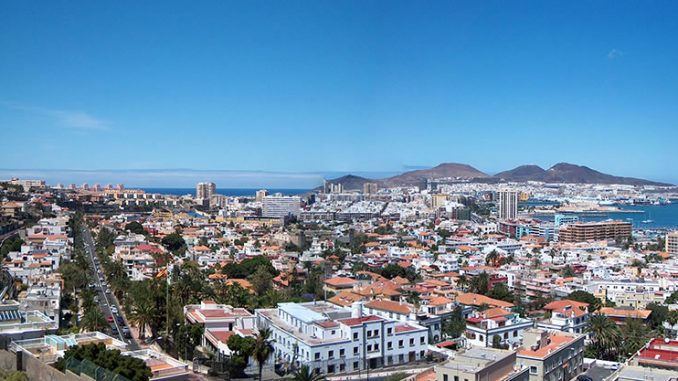
Las Palmas is the capital city of Gran Canaria. It is found to the north east of the island; this is a particularly beautiful area, set amongst two scenic coves. In between these coves are the Playa de Las Alcaravaneras and Playa de Las Canteras beaches; two perfect spots for soaking up the rays and swimming in the Atlantic Ocean. The city of Real de Las Palmas was first established in the late 15th century. Hence it also is a city of substance, with its own long established culture and local economies before it became popular with tourists. As the settlement grew, it split into two districts, Triana and Vegueta. These were located on the left and right banks respectively of the Barranco de Guiniguada. Nowadays, the Calle Juan de Quesada, a modern day main road, forms the border between both of these areas. Vegueta is the ‘Old Town’ of Las Palmas, and since 1990 has been officially recognised by UNESCO as a place of great cultural and historical importance.

For about four centuries, the population of Las Palmas Gran Canaria mainly remained within the walls of Triana and Vegueta. During the 1500s, 1600s and 1700s, these two districts, as well as some humble immigrant and fishing districts and San José, together formed the city. However, in the 1800s, when Puerto de la Luz harbour was built, Las Palmas began to grow northwards, following the coast. It was at this time that Arenales, Alcaravaneras, La Isleta, Santa Catalina and Ciudad Jardín districts came into being.
Click Here for Hotels & Accommodation in Las Palmas Gran Canaria

Nowadays, Las Palmas is a vibrant city, full of culture. This is where the native sports of vela Latina (Canarian lateen sailing) and Lucha Canaria (Canarian wrestling) were born. Most weekends competitions are held, and spectators can admire the sailboats out on the water. Puerto de La Luz harbour is amongst Europe’s principal harbours. As a result, many nationalities and languages can be seen and heard on the streets. In the past three decades, the population of Las Palmas has doubled, and it now stands at approximately 400,000.

Whether visitors to Gran Canaria stay in Las Palmas itself, or base themselves elsewhere on the island, travelling to Las Palmas Gran Canaria on day excursions, there is no shortage of things to see and do. Along with the choice of beautiful beaches, there are both designer and fashion shops, as well as a host of places to eat, drink and socialise.
The Hotel Santa Catalina is one of the better known hotels in Las Palmas. The crème de la crème of society (including dignitaries and celebrities) often stays at this 5 star establishment. It is just a short stroll from Playa de Las Alcaravaneras beach. Alternatively, you can take a free shuttle to Playa de Las Canteras. Hotel Cristina Las Palmas and AC Hotel Gran Canaria are also located right beside this beach. Both are ideal for those who love chilling out on the beach, but don’t want to be too far from all the activities and sights that a city offers.




